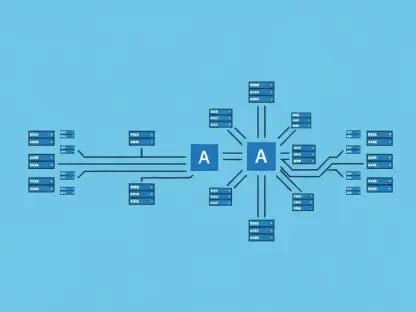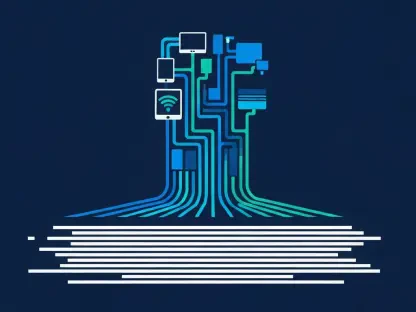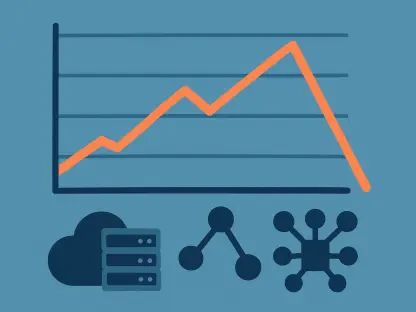Artificial Intelligence (AI) continually reshapes the landscape of cybersecurity and IT governance, functioning as both a solution and a challenge. This dynamic tool generates opportunities for growth and competitive advantage while simultaneously presenting new vulnerabilities. Today, AI influences how organizations guard their digital assets and orchestrate their IT governance, driving efficiency and, paradoxically, introducing potential blind spots that need addressing. As cybersecurity threats become more sophisticated, the dual nature of AI’s role assumes significance, prompting an examination of its impact on modern digital infrastructure.
AI’s Role as a Security Enabler
Enhancing Cybersecurity Frameworks
AI emerges as a revolutionary component in bolstering cybersecurity frameworks. Its capabilities extend across various domains such as data protection and threat hunting, transforming traditional security measures. AI algorithms can sift through considerable amounts of data, highlighting high-risk areas and enabling prompt action against threats. By automating mundane tasks, AI empowers cybersecurity teams to focus on strategic defense measures rather than operational burdens. Enhanced data protection through AI, involving continuous monitoring and encryption, ensures sensitive information is safeguarded against unauthorized access, providing businesses with an increased layer of security.
Facilitating Rapid Response
AI also facilitates rapid response to cyber incidents, a feat previously unimaginable with manual operations. The adaptability of AI-driven systems enables real-time analysis and recognition of anomalies, thus minimizing damage from cyber-attacks. AI’s predictive capabilities allow organizations to anticipate potential threats by evaluating patterns and behaviors, contributing to a proactive security posture. Furthermore, integration of AI with existing IT systems enhances their efficiency, making threat response faster and more effective. Consequently, AI’s intervention in cybersecurity translates into superior incident management, reducing vulnerabilities and promoting resilience against evolving cyber threats.
The Challenges and Risks of AI in IT Governance
Expanding Attack Surfaces
Despite its benefits, AI introduces new complexities into IT governance. By increasing the number of connected devices and applications, AI expands organizational attack surfaces. More points of access mean more opportunities for breaches unless robust security protocols are in place. A significant portion of professionals expresses concern over AI complicating attack surface management. Issues stemming from AI, such as the exposure of proprietary data or lack of transparency, serve as potential entry points for malicious entities. As AI integration deepens, maintaining a focus on security becomes crucial in mitigating potential risks associated with these widened attack surfaces.
Navigating Compliance and Ethical Concerns
Compliance and ethical challenges are vital considerations in AI deployment across IT governance. Uncertainties surrounding AI-driven processes necessitate rigorous scrutiny to ensure compliance with regulatory standards. AI models occasionally operate as black boxes, creating challenges in clarifying decision-making processes. This opacity raises ethical questions when AI outputs influence significant business decisions or impact customer data privacy. Addressing these concerns requires organizations to establish transparent AI operations and consistent auditing mechanisms. By doing so, they ensure that AI development and deployment align with established legal and ethical standards.
Strategic Measures for AI Integration
Developing Comprehensive Security Strategies
To harness AI’s advantages while mitigating its risks, the formulation of comprehensive security strategies is paramount. Organizations are encouraged to implement advanced threat modeling frameworks that anticipate AI-induced vulnerabilities. Appropriate checks and balances, including rigorous data quality assessments, should be a standard practice to refine AI models before deployment. Further embedding AI into existing IT infrastructures enhances synergy, allowing seamless functionality and heightened security performance. Emphasizing standard security protocols tailored for AI-based applications reassures stakeholders of the firm’s commitment to safeguarding AI deployments.
Fostering a Culture of Continuous Education
Additionally, fostering a culture of continuous education within organizations underscores the importance of AI security awareness. Employees at all levels must receive training on AI’s implications for security and governance, ensuring cohesive understanding and vigilance. By equipping teams with up-to-date knowledge on AI risks and mitigation strategies, businesses can better position themselves to address potential challenges. Training should emphasize AI’s dual role, highlighting its capacity to enhance technological capabilities while introducing fresh avenues for cyber risk. Through consistent educational initiatives, organizations maintain a responsible approach toward AI adoption.
Embracing a Balanced Approach to AI Adoption
Artificial Intelligence (AI) is continuously redefining the realms of cybersecurity and IT governance, standing as both a solution and a challenge. This ever-evolving tool offers pathways to growth and competitive edges while simultaneously introducing fresh vulnerabilities. In today’s digital age, AI significantly affects how businesses protect their digital assets and organize their IT governance. While it enhances operational efficiency, it also paradoxically creates potential blind spots that need careful attention. As threats in the cybersecurity arena grow more complex and sophisticated, the dual nature of AI’s influence becomes increasingly vital. It urges an in-depth examination of its profound impact on modern digital infrastructure. Organizations are finding themselves balancing the benefits of AI-driven innovation with the necessity to safeguard against the risks it introduces. Thus, AI remains a double-edged sword, pushing the boundaries of what’s possible while demanding heightened vigilance in the face of evolving threats and challenges.









